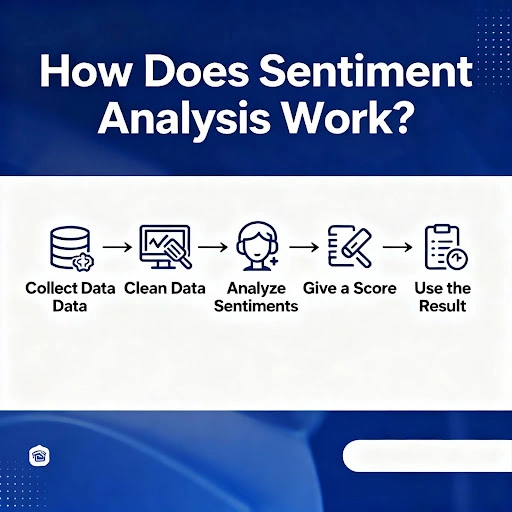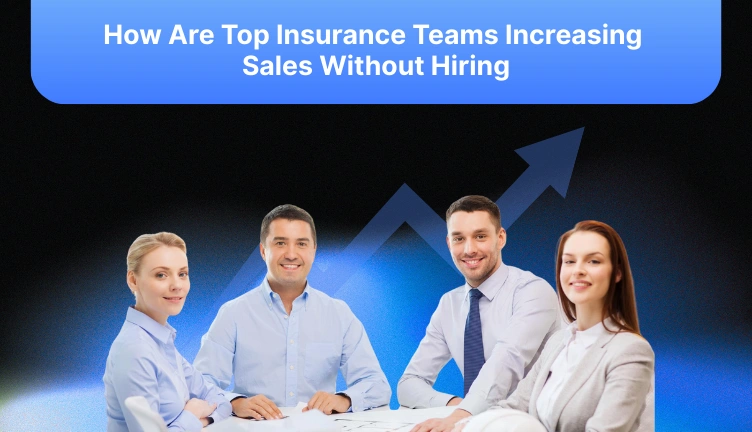In today's customer-first business landscape, understanding how people feel about your product, brand, or service is no longer optional; it’s essential. Traditional feedback methods often miss the emotional tone behind customer words. That’s where sentiment analysis comes in.
But what does it actually look like in practice? How do you go from raw conversations to actionable insights? This blog walks you through a detailed sentiment analysis example, showcases real use cases, and explores how businesses can use it to drive smarter decisions.
A sentiment analysis example is a real-world scenario that shows how businesses analyze text data such as customer reviews or support chats to determine emotional tone, such as positive, negative, or neutral.
Analyze call sentiment with Convin!
What Is Sentiment Analysis?
Sentiment analysis is a tool that can tell you if customers feel positive, negative, or neutral when contacting your company. It uses technology to analyze the words and tone in customer messages, such as emails, chats, or phone calls.
Imagine you're a manager at a contact center and want to know if customers are happy or upset with your products or services. Instead of reading everything yourself, sentiment analysis can quickly sort messages and tell you if they are positive, negative, or just okay.
Detect negative CSAT trends using Convin’s sentiment tracker.
How Does Sentiment Analysis Work?

Here's how a sentiment analysis model works in simple terms:
- Collect Data: First, we gather customer messages, like emails or chat logs.
- Clean Data: We clean up the messages, removing numbers and extra punctuation.
- Analyze Sentiment: Next, the software uses special programs to read the words and decide if the message is positive, negative, or neutral.
- Give a Score: Instead of just saying "positive" or "negative," sentiment analysis can give a score to show strong feelings.
- Use the Results: Finally, we use the results to see what customers like or don't like. This helps us make things better.
Drive retention using Convin’s behavioral intelligence.
Common Sentiment Analysis Challenges
%20mini.webp)
While sentiment analysis is a powerful tool, it has challenges. Here, we'll explore some common hurdles organizations face when implementing sentiment analysis in contact centers.
- Ambiguity in Mixed Sentiments
One of the tricky parts of sentiment analysis is when messages contain mixed feelings. For instance, a customer might say, "I love your product, but the customer service was terrible." The software must recognize positive and negative sentiments in the same sentence. This ambiguity can be a real puzzle to solve.
- Slang and Informal Language
People don't always communicate formally. They use slang, emojis, and informal language. This can trip up sentiment analysis algorithms, as understanding these nuances requires keeping up with ever-evolving slang and digital expressions.
- Cross-Cultural Nuances
Language doesn't translate directly across all cultures. What's considered positive sentiment in one culture might be neutral or even harmful in another. Sentiment analysis needs to take into account these cross-cultural nuances to avoid misinterpretations.
- Contextual Understanding Shifts
Words often mean different things depending on the context. For example, "sick" might mean someone is ill, but in slang, it can mean something impressive. Sentiment analysis must consider the surrounding words to grasp the correct meaning.
- Irony and Sarcasm Interpretation
Irony and sarcasm can throw sentiment analysis for a loop. It might sound negative when someone says, "Oh, great! Another Monday," but it's sarcastically cheerful. Recognizing these subtleties requires advanced language comprehension.
- Data Imbalance Issues
In some cases, there may be an imbalance in the data. For example, positive customer feedback might significantly outweigh negative feedback. This can skew the results, making it appear that everything is perfect when there are genuine issues to address.
- Subjectivity vs. Objectivity
Sentiment analysis often deals with subjective opinions. But sometimes, people state objective facts alongside their feelings. Distinguishing between what's subjective and what's objective can be challenging for the software.
- Real-Time Analysis Demands
In fast-paced contact center environments, real-time analysis is essential. Delayed insights won't help when you need to address customer concerns immediately. Implementing sentiment analysis in real time requires robust infrastructure and efficient algorithms.
- Machine Translation Hurdles
For multinational companies, customer interactions come in various languages. Accurate translation before sentiment analysis is vital, as inaccuracies in translation can lead to incorrect sentiment analysis results.
- Data Privacy Concerns
Finally, there are data privacy concerns to consider. Sentiment analysis requires access to customer messages, which can raise privacy issues. Organizations must handle customer data carefully and comply with data protection regulations.
Understand your customers better with sentiment analysis.
This blog is just the start.
Unlock the power of Convin’s AI with a live demo.

Benefits Of Sentiment Analysis In Contact Centers
.webp)
Sentiment analysis isn't just a buzzword; it's a powerful tool that can revolutionize the operations of contact centers.
Here, we'll explore the numerous benefits that sentiment analysis offers, accompanied by real-world examples that illustrate its impact.
- Proactive Issue Resolution
Sentiment analysis enables contact centers to identify and address customer issues proactively. By analyzing customer interactions, businesses can identify and address emerging issues before they escalate.
For instance, a telecom company can detect a sudden surge in negative sentiment related to dropped calls and promptly address network issues to prevent customer churn.
- Optimized Resource Allocation
Contact centers often face fluctuations in call volumes and customer inquiries. Sentiment analysis helps predict peaks in customer dissatisfaction or high call traffic periods.
With this information, contact center managers can optimize staff allocation to ensure enough agents are available during busy times, reducing customer wait times and improving service quality.
- Brand Reputation Management
A company's reputation is everything. Sentiment analysis plays a vital role in brand reputation management by identifying negative sentiment in real-time.
For instance, a hotel chain can monitor social media sentiment to detect cleanliness or service quality complaints. By addressing these issues promptly, they can mitigate reputational damage and demonstrate their commitment to customer satisfaction.
- Customer Retention Strategies
Happy customers are more likely to stay loyal. Sentiment analysis helps contact centers identify areas where customers are dissatisfied, enabling them to implement retention strategies.
For instance, an online retailer can analyze sentiment data to detect recurring issues with late deliveries and offer discounts or loyalty rewards to dissatisfied customers, reducing customer churn rates.
- Product and Service Improvement
Customer feedback is a valuable source of insights for product and service improvement. Sentiment analysis provides actionable insights into what customers like and dislike.
For instance, a tech company can analyze sentiment data from customer interactions to identify recurring issues with a software feature. They can then use this information to enhance the feature, increasing customer satisfaction.
- Operational Efficiency Gains
Efficiency is paramount in contact center operations. Sentiment analysis streamlines operations by automating the sorting and prioritization of customer interactions. This automation reduces manual workloads, allowing agents to focus on more complex tasks and improving overall efficiency.
- Personalized Customer Interactions
Customers appreciate personalized experiences. Sentiment analysis enables contact centers to tailor interactions based on the customer's mood and preferences.
For instance, an e-commerce platform can use sentiment analysis to determine if a customer is excited about a new product launch. They can then send personalized recommendations and exclusive offers, increasing the chances of purchase.
- Competitive Advantage Insights
By monitoring customer sentiment, companies gain insights into what differentiates them from competitors.
For instance, an automobile manufacturer can use sentiment analysis to compare customer sentiments about their vehicles versus those of their competitors.
They can identify areas where their cars excel and use this data for marketing campaigns to gain a competitive advantage.
- Compliance and Risk Management
In regulated industries like finance and healthcare, compliance is crucial. Sentiment analysis helps identify potential compliance issues in customer interactions.
For instance, a financial institution can use sentiment analysis to flag interactions where customers express dissatisfaction with compliance-related processes. This allows them to address concerns promptly, reducing regulatory risks.
- Enhanced Customer Experience
Ultimately, all the benefits mentioned above contribute to an enhanced customer experience. Happy customers are more likely to become loyal advocates for your brand, leading to increased customer retention and positive word-of-mouth marketing.
Resolve issues faster with Convin’s tone detection.
Case Study: Sentiment Analysis in Business

Among various methods, artificial neural networks have achieved an impressive 85% accuracy rate in sentiment identification, marking the highest level of accuracy attained.
Convin, powered by artificial intelligence, constantly monitors every customer conversation and ensures an accurate sentiment analysis based on the system’s insights. One of Convin’s clients - a hospitality company- found out what negative sentiments their customers were facing.
The software captured these insights through key phrases or words that included expensive, did not call back, the hotel was not good, etc. As these negative sentiments affected the business negatively, the company faced a heavy backlash, with negative criticism reaching the outside crowd, and their quarterly customers declined by 7%.
After thoughtful investigation, the company took appropriate measures to improve these sentiments. Some of them included -
- Better customer service.
- Timely resolution of grievances.
- Attractive discounts and complementary services.
- Vigorous customer service training.
As a result, the next quarter saw a steep increase in customers by 6%, and it continues to grow.
Coach agents with Convin’s emotion-based feedback!
Expert Sentiment Analysis Tips & Best Practices
Image: Create an infographic with the pointers below. Use heading, “Sentiment Analysis Tips & Best Practices”
.webp)
- Decoding Complex Emotions
Sentiment analysis goes beyond simple positive and negative classifications. Expertise lies in unraveling the intricate tapestry of human emotions.
Using Convin, call center leaders can benefit from delving into nuances such as sarcasm, irony, and subtle shifts in sentiment.
- Fine-Tuning Accuracy
Precision in sentiment analysis tools is achieved through meticulous fine-tuning of algorithms and models.
With Convin, call center managers and supervisors can invest in continuously refining high accuracy, reducing false positives and negatives.
- Strategic Precision in Analysis
Convin aims for a strategic approach to perform sentiment analysis. This means focusing on specific aspects of data that are most relevant to its objectives. Tailoring the analysis to the organization's unique needs allows for more actionable insights.
- Elevating Analytical Approaches
Beyond the basic sentiment analysis, Convin explores advanced techniques such as aspect-based sentiment analysis.
This approach dissects opinions about various product or service aspects, providing a more comprehensive understanding of customer feedback.
- Unlocking Actionable Insights
.webp)
The ultimate goal of performing sentiment analysis is to provide actionable insights. Convin ensures that its sentiment analysis efforts lead to concrete recommendations and strategies. This involves effectively integrating sentiment data into decision-making processes.
Bringing Sentiment Analysis Examples To Life
In our exploration of sentiment analysis, we've unraveled the intricacies of this fascinating field and witnessed its transformative potential. From deciphering customer sentiments to gauging public reactions, sentiment analysis is the compass guiding us through the vast sea of human expression.
Now, it's your turn to harness this power. Whether you want to enhance your brand's reputation, fine-tune products, or understand your audience better, sentiment analysis is your trusted ally.
Ready to dive in? Let's put theory into practice. Book a demo with Convin today, and together, we'll bring sentiment analysis to life for your unique needs.
Frequently Asked Questions
- What Is A Real-Life Example Of Sentiment Analysis?
A sentiment analysis example in real life is social media monitoring. Companies often use sentiment analysis models to analyze tweets, comments, and posts about their products or services. They can make informed decisions about marketing strategies and customer engagement by gauging public sentiment.
- What Is Sentiment Analysis In NLP With Example?
Sentiment analysis in Natural Language Processing (NLP) involves classifying text as positive, negative, or neutral.
For instance, analyzing customer reviews on e-commerce platforms to determine whether a review expresses satisfaction, dissatisfaction, or neutrality regarding a product is a common example of sentiment analysis in NLP.
- What are some Sentiment Analysis examples in AI?
In AI, sentiment analysis is widely used in chatbots and virtual assistants. These AI systems analyze user input to determine the sentiment behind a query or statement and respond accordingly.
For instance, a chatbot might provide different responses based on whether a user's comment is positive, negative, or neutral.
- Where Can You Use Sentiment Analysis?
Sentiment analysis has diverse applications, including:
- Customer feedback analysis: Understanding customer opinions about products or services.
- Brand monitoring: Tracking public sentiment about a brand on social media.
- Market research: Sentiment analysis in market-related news and reports.
- Political analysis: Assessing public sentiment towards political candidates or issues.
- Product development: Identifying areas for product improvement based on user feedback.
- Financial market analysis: Predicting market trends by analyzing news sentiment.








.avif)